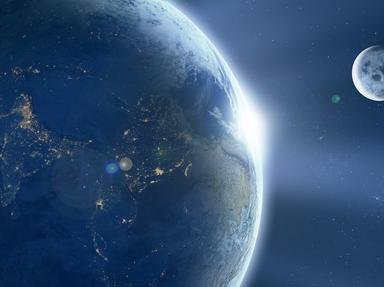Quiz Answer Key and Fun Facts
1. While our Moon (orbiting Earth) has been known to us since prehistoric times, Ganymede was not discovered until the 1600s. Which well-known astronomer discovered Ganymede?
2. As stated in the introduction, Ganymede is the largest moon in the Solar System. It is so large that not even all of the planets are larger. Which planet or planets has a smaller diameter than Ganymede?
3. Ganymede is part of a group of four satellites that orbit Jupiter. What is the correct order of the satellites from closest to Jupiter to farthest away?
4. Gravity could be an important factor if humans visit Ganymede. Which of these bodies has gravity that is closest to that of Ganymede?
5. Water could also be an important factor for human visitors to Ganymede. Which best describes the amount of water available on Ganymede?
6. The interior of Ganymede is believed to be similar to that of Europa. Along with nickel, which other element is most common at Ganymede's core?
7. Unlike many moons in the Solar System, Ganymede is large enough to have an atmosphere. Does oxygen make up a significant portion of Ganymede's atmosphere?
8. How does the mass of Ganymede compare to that of Mars and Mercury?
9. Several unmanned missions have entered Jupiter's orbit and approached Ganymede. Which of these is one of them?
10. Ganymede has cratering similar to that observed on the Moon and Mercury. How do Ganymede's craters compare to those?
Source: Author
bernie73
This quiz was reviewed by FunTrivia editor
rossian before going online.
Any errors found in FunTrivia content are routinely corrected through our feedback system.
